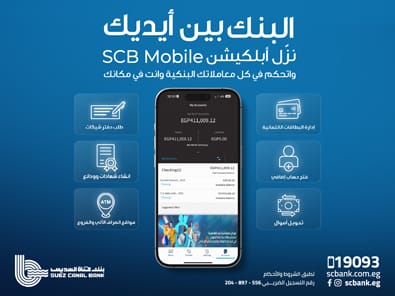In the fast-paced world of modern software development, delivering reliable, high-quality products under tight deadlines is a critical challenge. The concept of quality under pressure refers to maintaining software performance, stability, and user satisfaction despite the increasing demands of rapid releases, diverse user environments, and remote collaboration. As stakes rise—where a single bug can lead to significant financial loss or damage to brand reputation—the need for robust quality assurance processes becomes more urgent than ever.
This landscape has prompted organizations worldwide to adopt global testing strategies—comprehensive, scalable, and adaptable testing approaches designed to address the complexities of today’s digital ecosystem. By understanding how global testing functions as a strategic response, companies can better prepare for and withstand the pressures of delivering flawless user experiences across diverse environments.
Understanding the Concept of Global Testing
Global testing is an approach that extends beyond traditional testing methods by emphasizing comprehensive coverage across diverse devices, operating systems, networks, and user scenarios. Unlike localized testing, which might focus on specific environments or configurations, global testing ensures that software performs reliably for users worldwide, regardless of their unique setups.
This method is particularly vital in today’s interconnected world, where applications are accessed through myriad devices—from smartphones and tablets to desktops—and in various network conditions. Global testing employs a mix of manual and automated techniques to simulate real-world usage patterns, identifying issues that might only surface under specific circumstances.
Differences from traditional testing
- Broader environmental coverage, including different hardware and network conditions
- Use of automation tools and AI for scalability and speed
- Focus on user experience consistency across regions and devices
Supporting rapid development cycles and remote work trends
As organizations adopt agile methodologies and remote collaboration, the need for continuous and scalable testing grows. Global testing enables teams to quickly identify issues in diverse environments, facilitating faster releases without compromising quality. Automated testing platforms, cloud-based testing labs, and AI-driven diagnostics make it feasible to perform extensive testing in parallel, even when teams are geographically dispersed.
The Educational Foundation: Why Testing Quality Matters
Rigorous testing directly impacts user satisfaction, trust, and brand loyalty. Studies show that users are more likely to abandon poorly functioning apps—especially in competitive markets—highlighting the importance of thorough quality assurance. When software is thoroughly tested, it not only enhances user experience but also reduces long-term costs associated with post-release bug fixes and support.
For example, a bug that escapes into production can cost thousands of dollars in emergency patches, customer compensation, and reputation management. Conversely, investing in comprehensive pre-release testing can save organizations significant sums and protect their brand integrity.
Furthermore, consistent quality fosters trust among users, especially in industries like finance and healthcare, where reliability is paramount. Building this trust requires a proactive testing culture that emphasizes early detection and continuous improvement.
Cost implications of testing
| Stage | Cost Impact |
|---|---|
| Pre-release testing | Moderate; prevents costly bugs later |
| Post-release bugs | High; includes patching, support, reputation damage |
Building trust and reputation
Consistent, high-quality software delivery builds customer confidence. Companies that prioritize comprehensive testing are more likely to receive positive reviews and retain users over competitors. Over time, this reputation becomes a strategic asset, especially when launching new features or entering new markets.
Challenges of Ensuring Quality in a Remote, Distributed World
The rise of remote work—which increased by 159% in recent years—has transformed how teams collaborate and conduct testing. While remote work offers flexibility and access to global talent, it introduces unique challenges in maintaining consistent quality standards.
Managing diverse devices, networks, and user behaviors across different regions requires advanced testing strategies. Without proper coordination, issues like device incompatibility, network latency, and regional settings may go unnoticed until post-release, causing costly fixes and user dissatisfaction.
Global testing acts as a safeguard, enabling teams to simulate real-world conditions from various locations and device configurations. This proactive approach minimizes risks associated with dispersed teams and ensures that quality is preserved regardless of geographic or technical disparities.
Managing diverse environments
- Testing on multiple operating systems and browser versions
- Simulating varied network speeds and latencies
- Accounting for regional language and currency settings
Mitigating dispersed team risks
By adopting cloud-based testing platforms and automation, organizations can coordinate testing efforts across time zones, ensuring continuous coverage. This approach not only reduces bottlenecks but also promotes a culture of continuous testing and feedback, crucial for maintaining high standards in a distributed environment.
Case Study: Mobile Slot Testing LTD as a Modern Illustration
While many organizations recognize the importance of comprehensive testing, Mobile Slot Testing LTD exemplifies how modern companies implement these principles effectively. Given that 88% of app usage occurs within apps rather than browsers, mobile app testing is a top priority for ensuring quality under pressure.
Mobile Slot Testing LTD employs a global testing approach, leveraging cloud platforms and automation to evaluate their products across thousands of device configurations worldwide. This strategy allows them to detect and resolve issues before release, maintaining high standards even amidst tight deadlines.
To see how their testing efforts translate into measurable success, consider their this slot’s metrics, which demonstrate stability and user engagement metrics that reflect rigorous testing and quality assurance.
Lessons from Mobile Slot Testing LTD’s approach
- Prioritize testing on devices with high usage rates in target markets
- Utilize automation and AI to accelerate testing cycles
- Incorporate real-world user data to refine testing scenarios
Future Trends and Innovations in Global Testing
Emerging technologies are set to revolutionize global testing further. Machine learning algorithms can predict potential issues based on historical data, while cloud testing platforms enable instant scaling across multiple environments. Such innovations support the increasing complexity of app ecosystems and rising user expectations.
As apps integrate more features like augmented reality, AI-driven personalization, and IoT connectivity, the testing landscape must evolve. Continuous innovation ensures that organizations can maintain excellence under mounting pressure, delivering seamless user experiences regardless of technological complexity.
Looking ahead, the integration of artificial intelligence and cloud-based solutions will be essential for scalable, efficient, and thorough global testing, ultimately safeguarding quality in an increasingly dynamic digital environment.
Conclusion: Building Resilience and Trust Through Global Testing
“In an era where software quality can make or break a brand, global testing provides the strategic advantage needed to deliver excellence under pressure.”
In summary, global testing is not just a technical necessity but a strategic imperative for organizations aiming to thrive in a competitive, high-pressure environment. It bridges the gap between diverse user needs and rapid development cycles, ensuring that quality remains uncompromised.
Organizations should leverage automation, real-world data, and emerging technologies to enhance their testing frameworks continually. As demonstrated by modern companies like Mobile Slot Testing LTD, adopting a comprehensive, global approach to testing builds resilience, fosters trust, and sustains excellence in a rapidly evolving digital landscape.
By prioritizing global testing, businesses can confidently navigate the complexities of today’s technology ecosystem, delivering consistent, reliable experiences that meet and exceed user expectations.
الرابط المختصر: https://propertypluseg.com/?p=156519






















